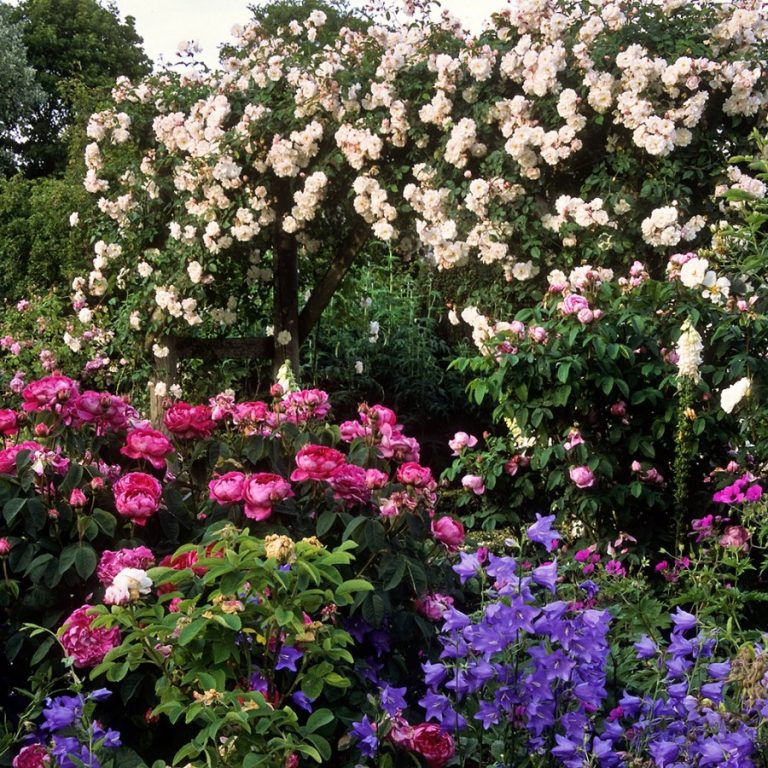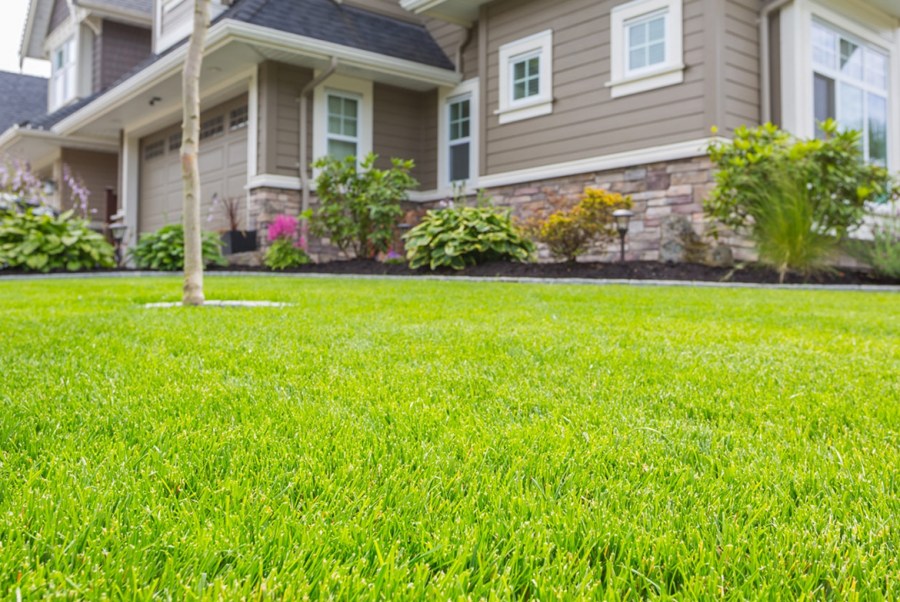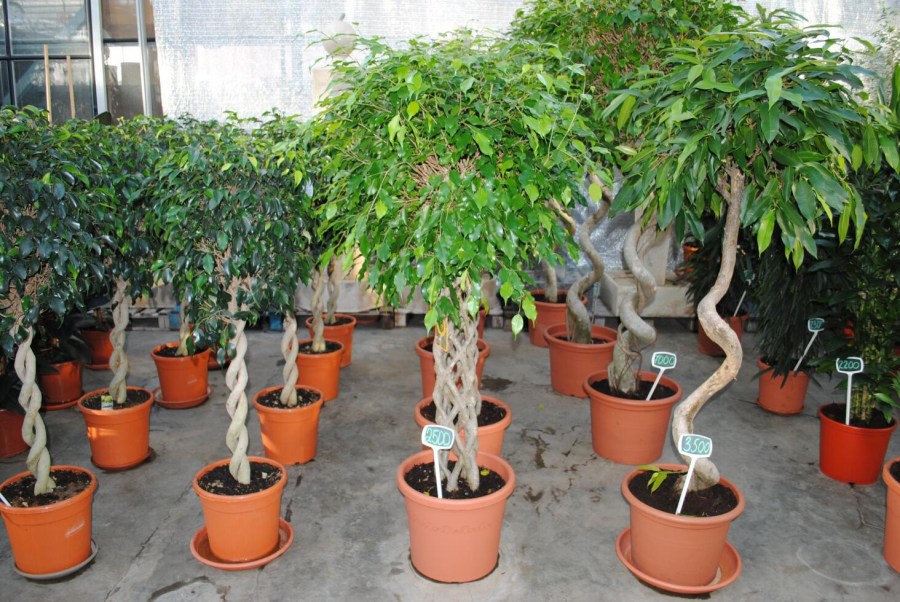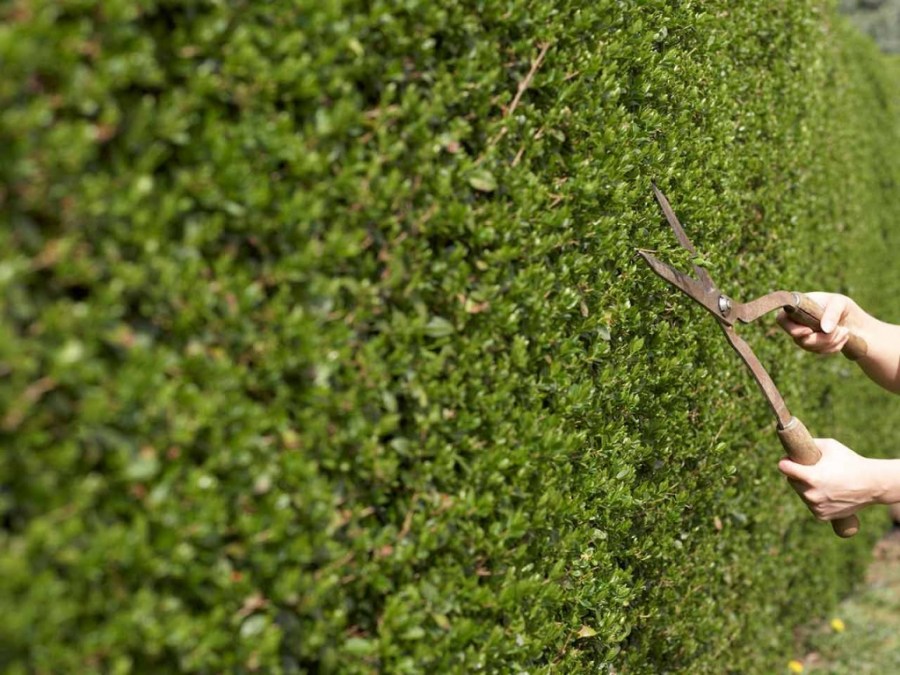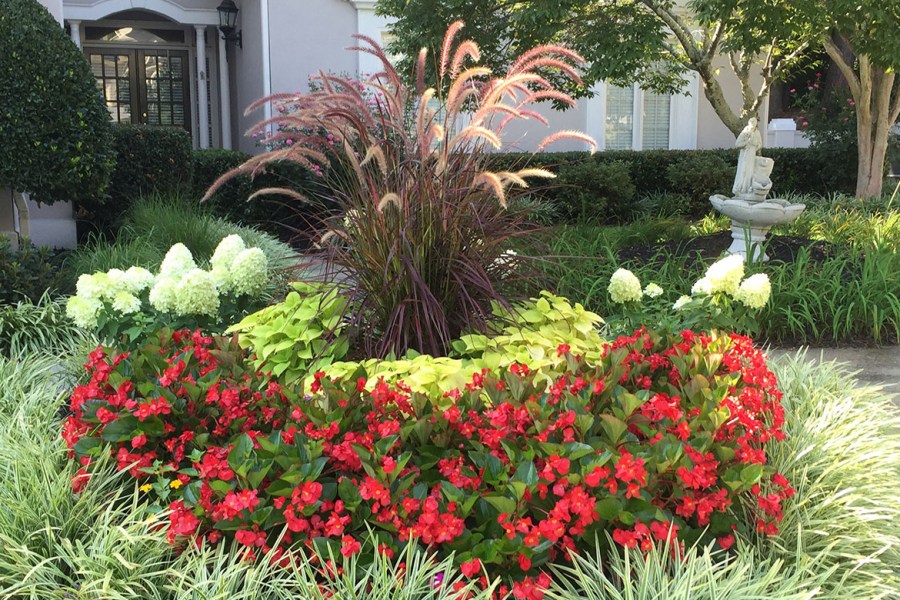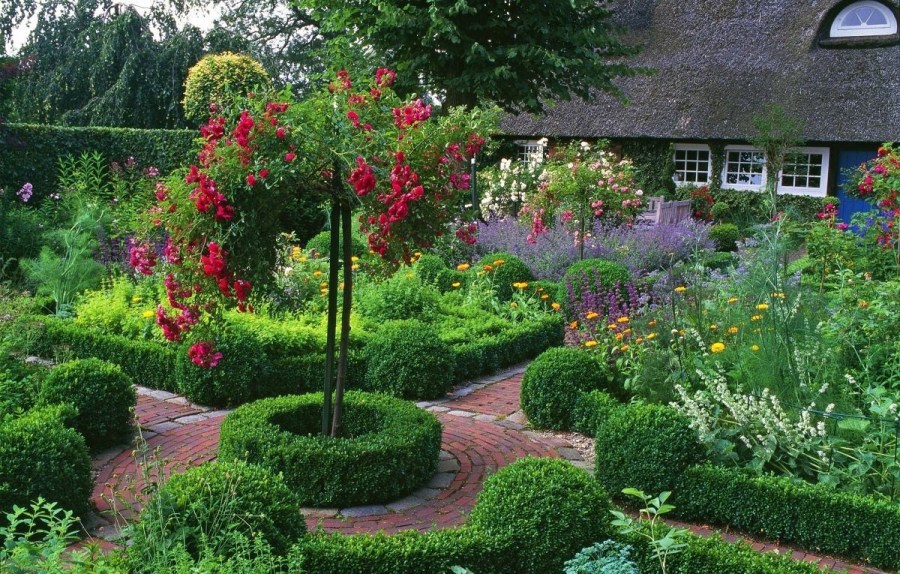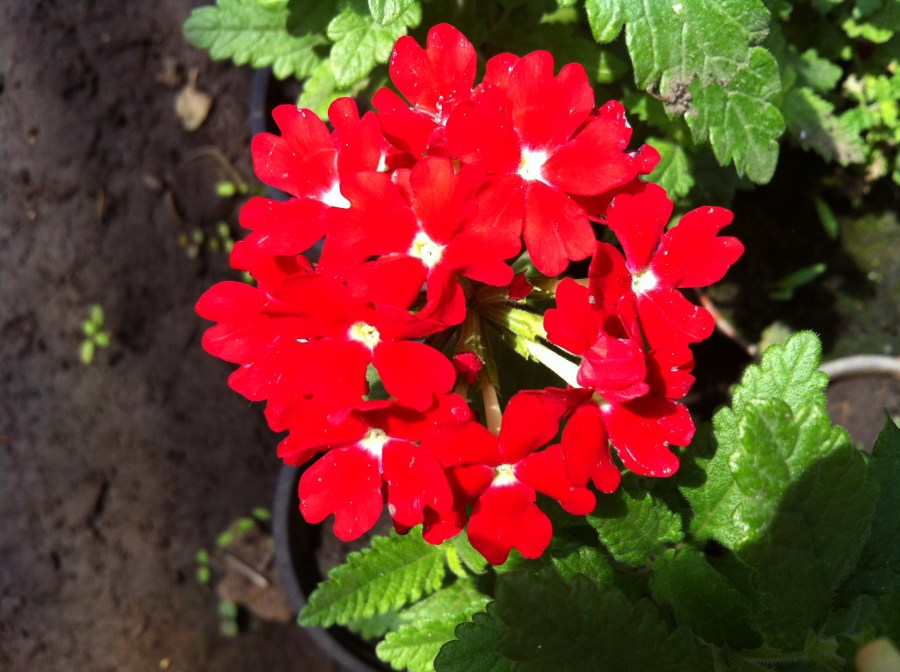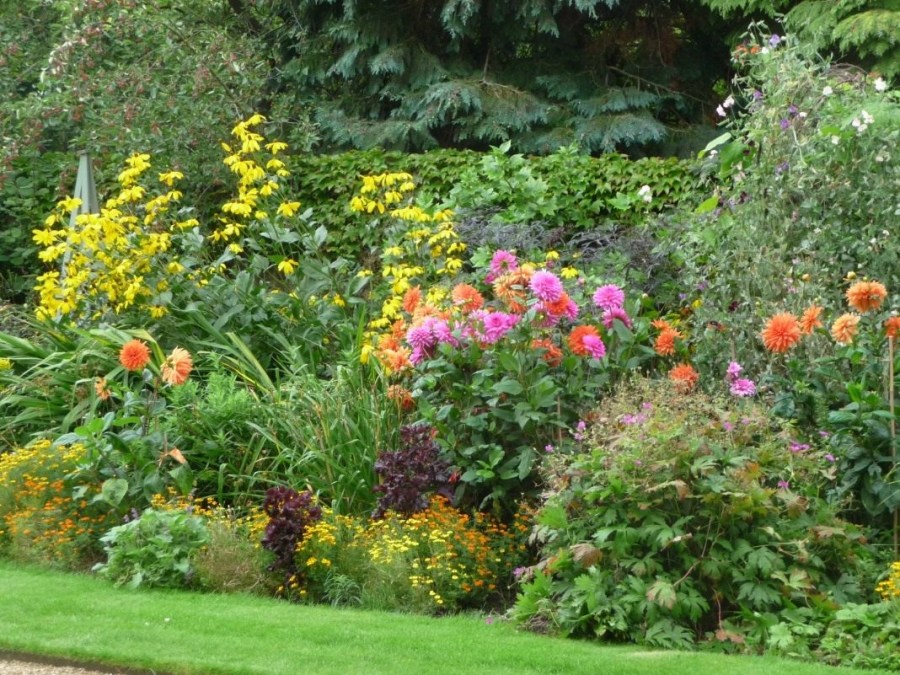Flower beds from perennials: the rules and features of growing for beginners (85 photos)
The ideal flower garden is a flower bed luxurious in scale and variety, which does not cease to please the surrounding buds and leaves with beauty for as long as possible. Such harmony is achieved by careful observance of the rules of planting, seed selection, planning of site plans and many other gardening secrets.
In general, the majority prefers perennial flowers, with which you can achieve continuous flowering due to correctly selected varieties, levels and layers.
Perennial varieties
Perennials, unlike annuals, are able for several years to take their place in the country flower bed. With the advent of cold weather, only the upper part of the plant withers, and rhizomes and tubers remain in the ground for a period, often exceeding a decade.
In addition to a long life, they differ in a number of other advantages:
- A wide range of varieties and species (more than 300 thousand);
- Unpretentiousness in growth, not a requirement of much attention;
- Long flowering period;
- Resistance to frost;
- Preservation of excellent decorative qualities throughout the cycle;
- The ability to reproduce through rhizomes, shoots and seeds, which allows replanting flowers, breaking new flower beds without additional investments;
- The inclusion in the group of medicinal plants, which makes it possible to grow a personal pharmacy.
Creating a perennial flowerbed
Properly planted perennial flowers in the flowerbed should create continuous flowering when new buds come to replace the flowering varieties, and so on until the end of the summer season.
Planning and designing a new front garden includes several important rules that must be taken into account at the preparation stage:
- The inclusion of flower beds in the general zoning of the site;
- Ability to use the terrain;
- The correct selection of plants;
- Planting density and flowering time.
The first two points involve the search for individual ideas and solutions, when, depending on the zoning of the site, the allocation of individual zones, the availability of free space in the territory, the most favorable position for a future flower bed is sought.
In each case, there is a detailed acquaintance with the erected front garden, the nature of the soil, its illumination, humidity, and even neighboring buildings, shrubs and trees.
Choosing the Right Perennial
The question of which perennials are suitable for creating a lushly flowering flower bed requires additional analysis. Mostly, attention is paid to several factors: the type of soil, the brightness of the location, available area, flowering cycle, a combination of type and color.
So, fertile lands like lupine, bell and mallow, and too damp and marshy ideal for asters, yarrow and cornfinch. An admixture of loam, sand and gravel will not interfere with the growth of flax, valerian and sage, and phlox, cloves, cosmeas are not afraid of dry soil.
The sun's rays play an important role in the life of plants, but not all flowers prefer flowerbeds in the sweltering light. Different types of ferns, lilies of the valley and host are more fond of shade; for iris, primrose and astilbe, 4-6 hours of exposure to the sun will suffice, and beyond this time only peonies, phloxes, poppies and asters can withstand the heat.
Aconite, dicenter, hellebore, function, Endress geranium, plantain doronicum, musky mallow, crimson gravilate, crowded bell do not require large spaces.
It is important to create a flowerbed of continuous flowering to take into account the plant cycle.For example, meconopsis blooms from May to June, the delphinium from June to July, stonecrop pleases with buds from July to September, and sage to the end of August.
It is also necessary to calculate the desire and time for caring for the front gardens. If you are not afraid of laborious and long-term care, then boldly plant lilies, chrysanthemums, begonias, roses, hyacinths, dahlias, evening primrose and gladioli.
Unpretentious flowers are suitable for lazy people: peonies, irises, astilbe, geranium, asters, daylily, stonecrop, phlox, incense, clementis, hosta and lupine.
When choosing colors, the following recommendations are also taken into account:
- Only one palette applies: warm or cold;
- Visually increase the flower bed uniformity and a minimum number of colors;
- Beautiful flower beds from perennials are obtained if white, pink and blue inflorescences are used as background;
- Saturated and calm levels should alternate;
- Red flowers should not be planted in large spaces;
- One bright and saturated flower bed is enough for one garden.
Flower beds
All the front gardens according to the composition are conventionally divided into two large groups: regular and irregular.
In the first case, the flower bed has a clear distinction depending on the original pattern embedded in it. At the same time, flowers are planted in groups and for one period of flowering. In the opposite version, the plants are grouped in almost random order and bloom alternately, which is typical for perennials.
Also suburban flower beds are divided by their shape into round, rectangular, oval, triangular. At the same time, zoning of the flower garden space is purely individual: it is possible to repeat geometric shapes, draw straight or winding lines from the center, create unusual patterns and ornaments.
In the modern art of landscape design, step complexes or high flower beds, created from specially made drawers and boxes about a meter high, have also become popular. Different levels of pools are often cast from concrete.
The schemes of perennial flower beds are very diverse in dividing the inner section into sections and compartments, however, the main principle of planting is always observed: the brightest and tallest are located in the center, the plants are shorter and dimmer in the middle, and low-growing and long-flowering plants frame the composition.
Flower beds from perennials are bright, beautiful and attractive - this can be seen both live and in photographs. In general, the creation of any flower garden involves the competent choice, grouping and distribution of flowers according to their growth, color and cycle.
Using perennial flowers, this eventually results in a well-groomed miniature complex, striking with continuous flowering during the entire spring-summer-autumn season.
Photo of flower beds from perennials
Do-it-yourself splitter (120 photos) - instructions for a mechanical and electric splitter
Scarecrow in the garden - 65 photos of the implementation of the most daring ideas and ideas
Aquilegia: plant species, planting and care rules, reproduction + 105 photos of flowers
Join the discussion:










































